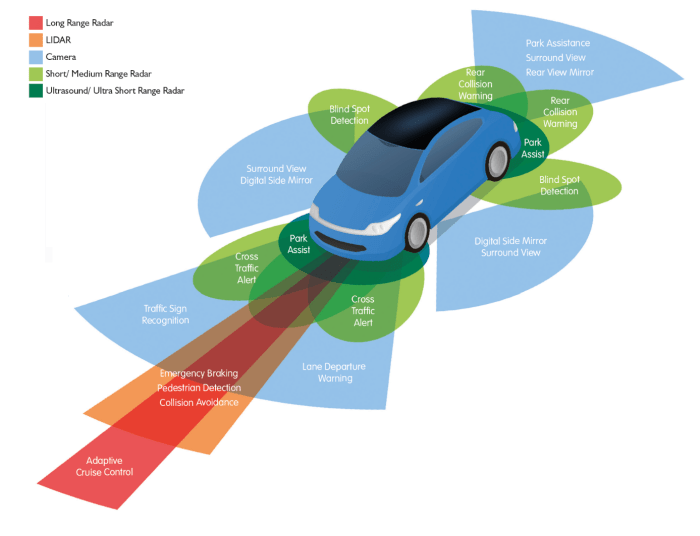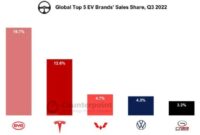The Need for Universal Terminology
Its time for universal terminology to describe adas features – Navigating the world of advanced driver-assistance systems (ADAS) can be a confusing experience for consumers. With every manufacturer adopting its own unique vocabulary to describe similar features, understanding the capabilities of different vehicles becomes a daunting task. This inconsistent terminology not only creates confusion for drivers but also hinders technological advancement and poses real-world safety risks.
Challenges of Inconsistent Terminology
Inconsistent terminology across different manufacturers poses significant challenges for consumers and the automotive industry as a whole. These challenges can be categorized into three main areas:
- Consumer Confusion:The most immediate impact of inconsistent terminology is confusion among consumers. When faced with a bewildering array of terms like “Lane Keep Assist,” “Lane Departure Warning,” and “Lane Centering,” drivers struggle to understand the precise functionality of each feature.
This lack of clarity can lead to misinterpretations and potentially dangerous situations, as drivers may overestimate or underestimate the capabilities of their vehicles.
- Difficulty Comparing Features:Inconsistent terminology makes it incredibly difficult for consumers to compare features across different vehicles. When trying to choose between two cars, consumers may find themselves struggling to determine which vehicle offers the more advanced or comprehensive ADAS suite. This lack of transparency makes it challenging for consumers to make informed decisions based on their specific needs and preferences.
- Hindering Technological Advancement:Inconsistent terminology also hinders technological advancement within the ADAS field. Without a common language, it becomes difficult to standardize testing procedures, compare performance metrics, and collaborate on research and development efforts. This lack of standardization slows down the progress of ADAS technology and hinders the development of truly groundbreaking features.
Real-World Problems
Inconsistent terminology can lead to real-world problems for drivers and consumers, creating confusion and potentially compromising safety. For instance:
- Misunderstanding Feature Capabilities:A driver might mistakenly believe that their vehicle’s “Lane Departure Warning” system will actively steer them back into their lane, when in reality it only provides an alert. This misunderstanding could lead to a dangerous situation, especially in situations where the driver is relying on the system to intervene.
- Difficulty Using Features Effectively:Consumers may struggle to understand how to use ADAS features effectively due to inconsistent terminology and lack of standardized instructions. For example, a driver might not know how to properly engage or disengage a “Lane Keeping Assist” system, leading to unexpected behavior and potentially dangerous situations.
- Lack of Trust in ADAS:Inconsistent terminology can erode consumer trust in ADAS technology. When drivers are unsure about the capabilities and limitations of different features, they may become hesitant to rely on these systems, ultimately hindering their adoption and potential benefits.
Benefits of Universal Terminology
Imagine a world where every driver understands the capabilities and limitations of their vehicle’s Advanced Driver-Assistance Systems (ADAS) with ease. This is the promise of universal terminology, a standardized language for describing ADAS features that can unlock a future of safer and more accessible driving technology.
Enhanced Driver Understanding and Confidence
Standardized terminology can significantly improve driver understanding and confidence in ADAS features. When drivers can readily grasp the function and limitations of a system, they are more likely to use it correctly and safely. For instance, a driver who understands that Adaptive Cruise Control (ACC) is designed to assist in maintaining a safe distance from the vehicle ahead, and not to take over driving completely, is less likely to become over-reliant on the system and more likely to maintain situational awareness.
This clarity fosters trust and encourages drivers to actively engage with ADAS technologies, ultimately leading to a safer driving experience.
Increased Adoption of ADAS Technology
Clearer communication about ADAS features can also drive wider adoption of these technologies. Consumers are more likely to embrace new technologies when they understand how they work and what benefits they offer. Universal terminology can simplify the complex language surrounding ADAS, making it more accessible to a wider audience.
This can lead to increased demand for vehicles equipped with ADAS, ultimately accelerating the development and deployment of these safety-enhancing technologies.
Improved Safety by Reducing Confusion and Misuse
Misunderstandings about ADAS capabilities can lead to confusion and misuse, potentially compromising safety. Universal terminology can significantly mitigate this risk by providing a common framework for understanding and interacting with these systems. For example, a driver who is familiar with the standardized terminology for Lane Departure Warning (LDW) is less likely to misinterpret the system’s alerts and more likely to respond appropriately.
This consistency in language across different vehicle brands and models fosters a safer driving environment for all.
Proposed Terminology Framework
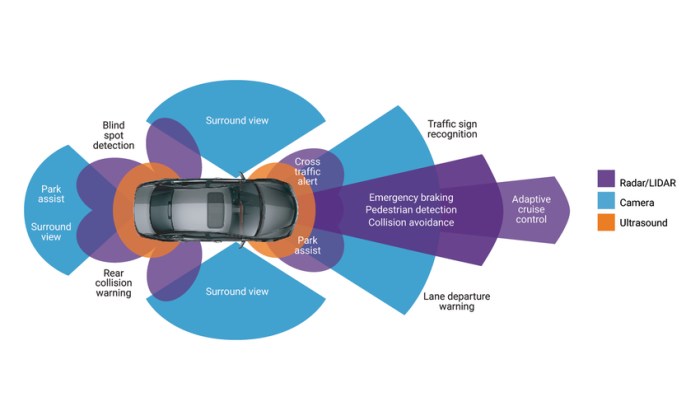
Establishing a universal terminology framework for ADAS features is crucial for clear communication and understanding among drivers, manufacturers, and regulatory bodies. This framework aims to standardize the names and descriptions of ADAS features, eliminating ambiguity and ensuring consistency across different languages and regions.
Proposed Terminology Framework
The proposed terminology framework is based on a comprehensive analysis of existing ADAS features and their descriptions used by major automotive manufacturers. The framework utilizes a hierarchical structure, grouping similar features under broader categories. This approach enhances clarity and simplifies understanding for users.
Table: Proposed Terminology Framework for ADAS Features
| ADAS Feature Category | Proposed Terminology | Current Terminology (Examples) | Rationale |
|---|---|---|---|
| Lane Keeping Assistance | Lane Keeping Assist (LKA) | Lane Departure Warning (LDW), Lane Keeping System (LKS), Lane Centering Assist (LCA) | Consolidates various terms into a single, concise name that reflects the feature’s primary function. |
| Adaptive Cruise Control | Adaptive Cruise Control (ACC) | Adaptive Cruise Control (ACC), Intelligent Cruise Control (ICC), Active Cruise Control (ACC) | Maintains consistency with widely used terminology, ensuring clarity and familiarity. |
| Automatic Emergency Braking | Autonomous Emergency Braking (AEB) | Automatic Emergency Braking (AEB), Forward Collision Warning (FCW), Pre-Collision System (PCS) | Simplifies terminology, eliminating variations that can cause confusion. |
| Blind Spot Monitoring | Blind Spot Monitoring (BSM) | Blind Spot Monitoring (BSM), Blind Spot Detection (BSD), Rear Cross Traffic Alert (RCTA) | Unifies terms for similar functionalities, reducing redundancy and improving understanding. |
| Parking Assistance | Parking Assist | Park Assist, Automatic Parking Assist, Parking Pilot | Uses a general term to encompass various parking assistance features, promoting ease of comprehension. |
The proposed terminology framework prioritizes clarity, consistency, and user-friendliness. By using standardized names and descriptions, the framework aims to bridge the gap between manufacturers, drivers, and regulatory bodies, facilitating better communication and understanding of ADAS features.
Implementation Challenges and Solutions: Its Time For Universal Terminology To Describe Adas Features
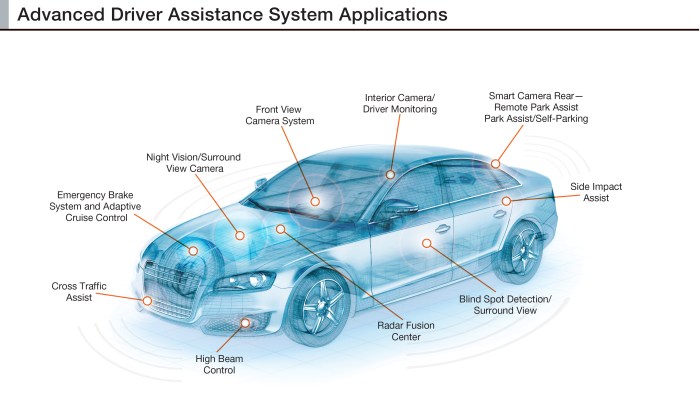
Implementing universal terminology for ADAS features presents several challenges, ranging from industry resistance to the costs of implementation. However, potential solutions exist, involving collaboration, regulation, and education.
Resistance from Manufacturers
Manufacturers may be reluctant to adopt universal terminology due to concerns about brand identity, proprietary features, and potential disruption to existing marketing strategies.
- Brand Identity: Manufacturers often use unique names for their ADAS features to differentiate themselves in the market and create a distinct brand identity. This approach may be challenged by a universal terminology system, which could potentially lead to a homogenization of product descriptions.
- Proprietary Features: Some manufacturers may have developed unique ADAS features that are not covered by existing terminology. They might be hesitant to adopt a universal system that may not adequately represent their specific technologies.
- Marketing Strategies: Established marketing materials and campaigns may need to be revised to align with the new terminology, requiring significant investment and effort. Manufacturers may be reluctant to undertake this transition, particularly if they perceive a lack of immediate benefits.
Cost of Implementation
Adopting a universal terminology system requires significant investment in resources, including:
- Development and Maintenance: Creating and maintaining a comprehensive terminology database requires ongoing effort and expertise. This includes developing clear definitions, addressing potential ambiguities, and updating the system as new technologies emerge.
- Training and Education: Implementing a new terminology system necessitates training for employees, dealers, and customers to ensure consistent understanding and application. This involves developing training materials, conducting workshops, and providing ongoing support.
- Marketing and Communication: Communicating the new terminology to stakeholders requires a coordinated marketing and communication strategy, including public relations campaigns, website updates, and customer outreach programs.
Ongoing Maintenance, Its time for universal terminology to describe adas features
The rapid pace of innovation in the automotive industry necessitates ongoing maintenance of the universal terminology system.
- New Technologies: As new ADAS features are developed, the terminology system must be updated to encompass these advancements. This requires a continuous process of monitoring technological trends, evaluating new features, and adding new terms to the database.
- Technological Convergence: As different ADAS features become integrated, the terminology system needs to adapt to reflect these changes. This involves identifying overlapping functionalities, developing comprehensive definitions, and ensuring clarity for users.
- User Feedback: The terminology system should be responsive to user feedback, addressing any ambiguities or inconsistencies identified through user surveys, complaints, or other channels. This requires a mechanism for collecting and analyzing feedback, making necessary revisions, and communicating changes to stakeholders.
Future of ADAS Terminology
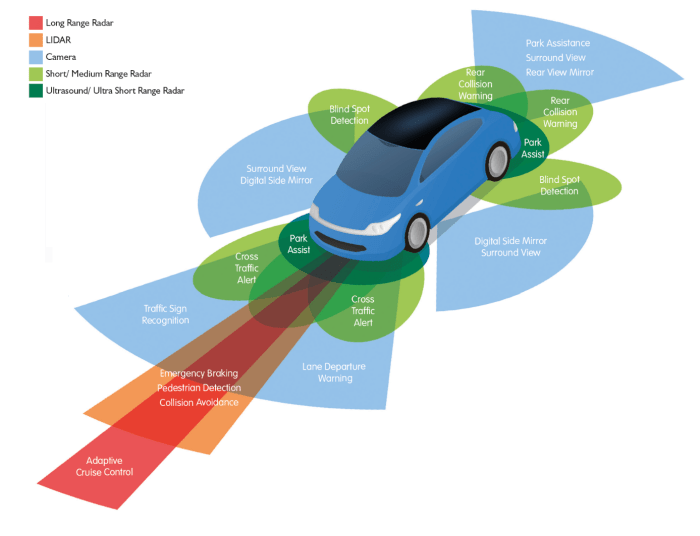
The adoption of universal terminology for ADAS features has the potential to significantly impact the future of advanced driving systems. By establishing a clear and consistent language, we can unlock new opportunities for collaboration, innovation, and ultimately, safer and more efficient transportation.
The Role of Universal Terminology in Future ADAS Development
A standardized naming system can streamline the development process for future ADAS features by promoting interoperability and reducing ambiguity. Developers can easily understand and integrate different components and systems, leading to faster innovation cycles and more robust solutions.
- Simplified Integration:Universal terminology facilitates seamless integration of ADAS features across different vehicle models and brands. Imagine a scenario where a new lane-keeping assist system developed by one manufacturer can be easily implemented into a vehicle from another manufacturer without the need for extensive modifications or complex coding.
- Enhanced Collaboration:Shared vocabulary fosters collaboration among researchers, developers, and manufacturers, accelerating the development of new and advanced ADAS features. With a common understanding of terminology, engineers can work together more efficiently, sharing ideas, resources, and best practices.
- Improved Data Sharing:Universal terminology allows for more effective data sharing and analysis, which is crucial for training and improving autonomous driving algorithms. Standardized data labels and descriptions ensure that different data sources can be easily combined and analyzed, leading to more accurate and robust models.

